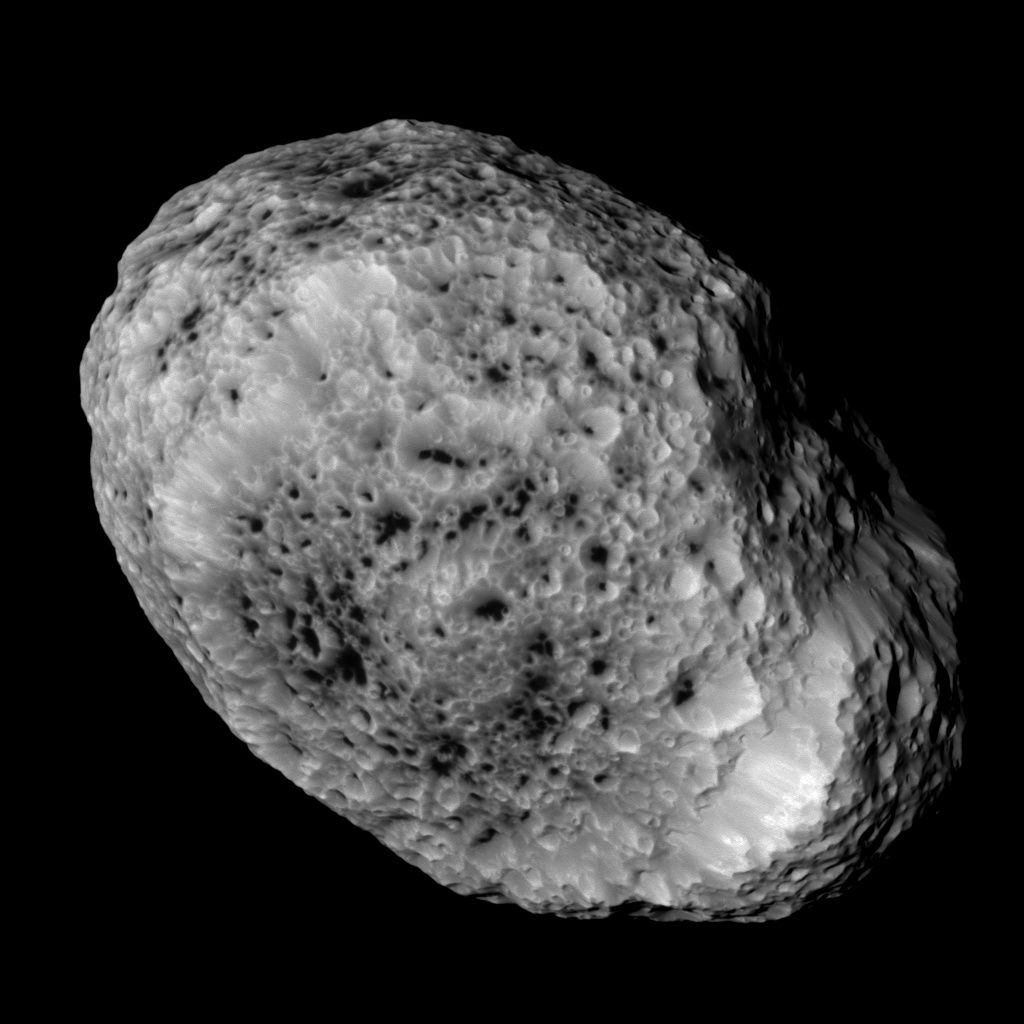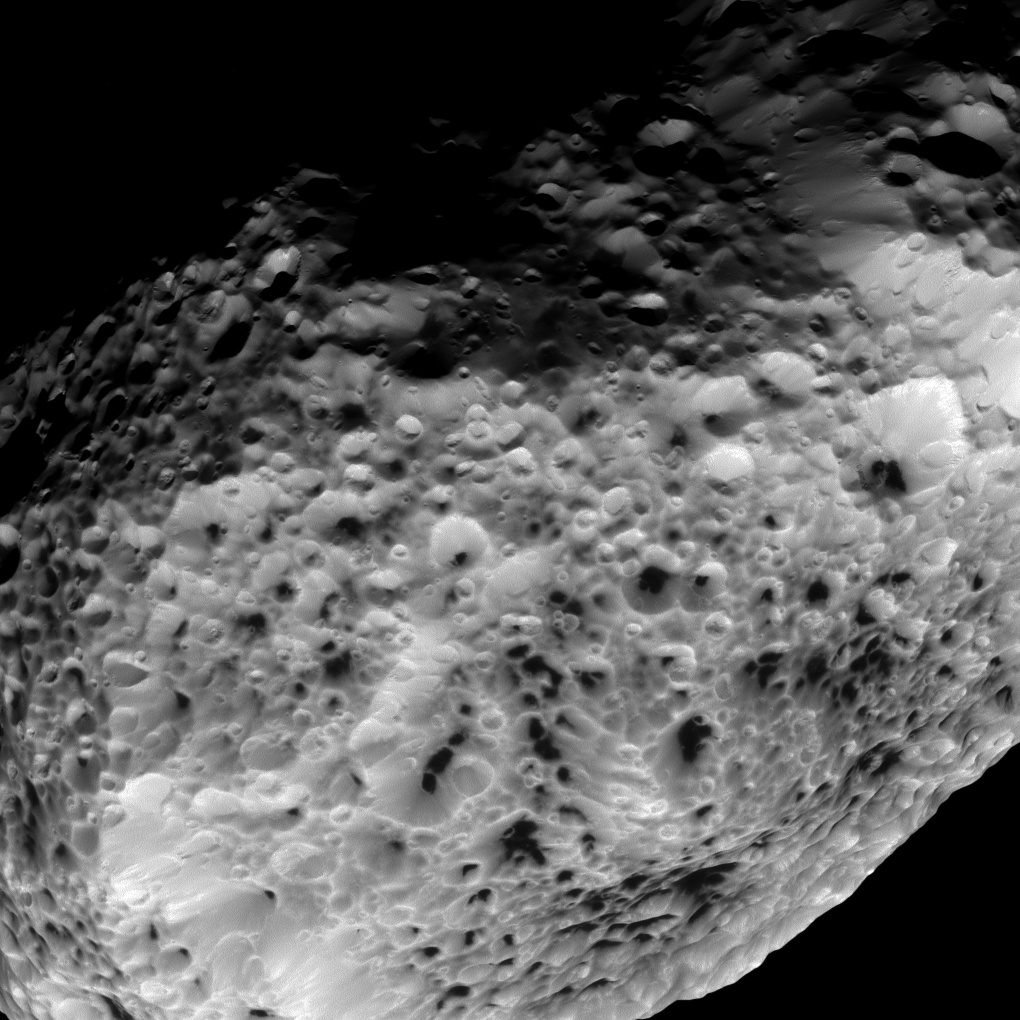
NASA’s Cassini spacecraft spiraling around Saturn zipped past the giant planet’s oddball moon Hyperion for the last time Sunday, catching a final glimpse of the bizarre body’s porous sponge-like surface.
Cassini flew about 21,000 miles (34,000 kilometers) from Hyperion at closest approach, marking the mission’s final flyby of the potato-shaped moon before the spacecraft heads for an intentional death dive into Saturn in September 2017.
Measuring 255 miles in diameter on its longest axis, Hyperion is covered in deep craters and resembles a wasp’s nest, with holes punched into the moon’s crust from ancient collisions with asteroids, comets or other objects around Saturn’s orbit.
Hyperion rotates chaotically and is about half as dense as water, and its porosity and weak gravity field mean impactors tend to compress the moon’s surface rather than leaving normally-shaped craters observed on other bodies, according to NASA.
The images captured by Cassini on Sunday show features on Hyperion as small as 145 feet, NASA wrote in a press release.

Cassini’s closest flyby with Hyperion occurred in 2005 at a distance of 314 miles, or 505 kilometers.
Mission managers termed Sunday’s flyby of Hyperion as the “first of the lasts” for Cassini, which launched in 1997 and arrived in orbit around Saturn in 2004. The plutonium-powered probe is next aiming for a June 16 encounter with Dione, which has stripe-like canyons with ice walls coursing across its surface.
Cassini’s final encounter with Dione is scheduled for August.
The mission’s last three flybys of Enceladus, which sends huge geysers of water ice into space from fissures near its south pole, are due before the end of the year. One of the flybys scheduled for Oct. 28 will place Cassini just 30 miles over Enceladus and is timed for when the moon’s plumes are at maximum output.
Cassini’s last close-up visit to Saturn’s largest moon Titan is set for late 2016.
Ground controllers plan to adjust Cassini’s path around Saturn for the last phase of the probe’s life, in which the spacecraft will move away from the giant planet’s moons and repeatedly pass between Saturn and its rings.
Email the author.
Follow Stephen Clark on Twitter: @StephenClark1.



